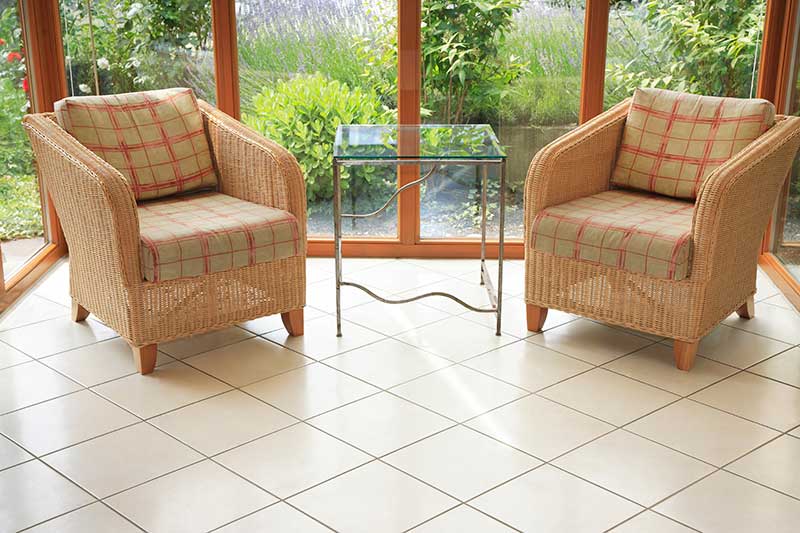The tiny house movement has swept across the nation and convinced many folks to downsize as they rethink how much space they need to be comfortable.
Regardless of how small the home is, it will still require heat in the winter unless it is located in a very warm climate. Every square inch of a tiny home needs to be utilized to maximize the feeling of freedom. To make a wise decision regarding heating options, you need to know how much heat will be needed.
This figure is arrived at by determining how many BTUs are necessary to heat your space. Once you have that number, you can move on to the next stage in the process: considering your options. This article will discuss some of the most popular systems being used by tiny home owners today.
Electric Heater Systems
Radiant Electric Heaters
For tiny home owners who intend to be on the grid most of the time, electric heat is an ideal option. There are many choices in this category, and most are available at your local big box store. The electric radiant heater has long been popular for supplemental heat, because radiant heat is recognized as an efficient method of warming people in the room, rather than air.
The reason they have not become a primary source of heat is that the units are typically small and are built to warm rooms between 120 and 200 square feet.
There are models that will heat a larger space, but also take up more room in the house. Many people don’t want to leave a portable electric heater running while they are out of the home, even though they all have safety switches, which should turn the heater off if it tips over.
Forced Air Heaters
Forced air heating is provided by a furnace or a heat pump, but these larger units present a space problem for tiny homes. New ductless units eliminate the need for energy wasting ductwork, but the outside unit must be mounted on the house so that it can safely travel while the home is on the road.
These units are efficient, they are not inexpensive, and the heat is still coming from wherever the unit is located, which will create hot and cold spots in the room.
Gas Heater Systems
Unless your tiny home is located in an established neighborhood, propane will be the most available source of gas. You can choose between ventless and direct vent heaters, and both have their pros and cons. Ventless heaters do not require a flue to the outside of the home, but there may be residual fumes that you can smell, and this could be offensive to some. Direct vent heaters exhaust all the fumes outside your home but require an opening in the wall to run a flue to the exterior.
Gas heat can be a great choice if you intend to spend a lot of time off the grid. You can purchase 20 lb. and 30 lb. portable containers that are easy to transport and provide up to a week of heat before needing to be refilled. Additionally, many portable gas heaters have thermostats, which will save money, since the heat will turn off when the desired temperature is reached. A gas heater also gives you the freedom to leave the house for a few days without worrying about frozen pipes.
Propane heaters are low maintenance and inexpensive compared to ductless options. Compared to fireplaces, they take up less space, as they do not require the clearance from the wall that many wood and pellet stoves do. However, the tanks are heavy and if you run out of fuel during heavy snowstorms, you may not be able to reach a location that can refill your tanks. As with the other options above, propane is a single source of heat that will create hot and cold spots in the room as the heat is moved by convection.
Wood Stoves
The idea of tiny house living brings to mind sitting around a glowing wood stove with a warm cup of coffee in the evening, and there are some great benefits associated with burning wood as your heat source.
- If you live off grid, you can get your fuel from the surrounding woods – sometimes for free!
- Wood heat is dry and doesn’t release a lot of moisture into the air. Excess moisture can be a mold source in a tiny home.
- Wood stoves are less expensive than other automated heat systems.
There are also some negative aspects with a wood stove:
- You either need to cut your own wood or buy it and have a place to store it so it stays dry.
- Wood stoves sized for tiny homes are small and will need to be filled multiple times if you want to keep the house warm.
- You can’t leave your home unless you have a supplemental heat source.
- Wood stoves will require a certain amount of clearance from the wall, which will subtract from the limited floor space available. There are some stoves with built-in heat shields, but they are larger and more expensive.
- Wood stoves are high maintenance, since the stove must be cleaned regularly, and the flue must be kept clear to avoid fire damage.
Radiant Floor Heating
Underfloor electric radiant heat is considered the most comfortable heat source and the best option if your tiny home is connected to shore power. As many tiny home owners are also switching to solar power, this option works great with radiant floor heating systems.
As mentioned above, radiant heat doesn’t depend on ductwork to heat a room, because it uses infrared radiation, which is transmitted by electromagnetic waves. Think of how the sun warms your car on a winter day, but not the surrounding air. Radiant heat eliminates most hot and cold spots because it heats people and objects, not the air.
Underfloor radiant heating systems do not require space for equipment. The entire heat source is under the finished flooring and evenly heats your entire living area at the same time. Combining a radiant floor heat system with a Smart thermostat allows you to let the home cool to a safe temperature while you are out and bring it up to the desired level right before you return, to save energy and reduce your utility bills.
Radiant Floor Heating Systems from Warmup
Warmup is the leader in radiant floor heating systems, as well as solutions to clear snow for sidewalks and driveways. Our systems are installed in homes and offices in over 70 countries, and we have a heat solution for virtually any flooring option.
Whether you are shopping for a system for your tiny home or adding supplemental heat in a new addition, underfloor radiant heat from Warmup provides quiet, clean, even heat wherever it is installed. Contact us today for more information or a free quick-quote on your next project.











![Thumbnail [200x250]](/wp-content/uploads/Indoor-Systems-Page-Image.png)
![Thumbnail [200x250]](/wp-content/uploads/image-13.png)
![Thumbnail [200x250]](/wp-content/uploads/Projects-Image.png)